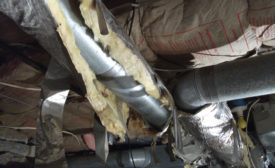David Richardson
David Richardson serves the HVAC industry as Vice President of Training for National Comfort Institute, Inc. (NCI). NCI specializes in training focused on improving, measuring, and verifying HVAC and Building Performance. If you’re an HVAC contractor or technician interested in learning more about building science applied to HVAC, contact David at ncilink.com/ContactMe.
ARTICLES
Offer comfort your competitors only wish they could provide
Read More
Duct Dynasty: Confronting Restrictive Air Filters
Measure and calculate the proper size and then verify the design
Read More
Duct Dynasty: Lessons from an Air-balancing Hood
Test and confirm your designs are meeting your expectations
Read More
Duct Dynasty: Four Essential Static Pressure Readings for Diagnostics
Troubleshooting common HVAC system pressure problems
Read More
Duct Dynasty: Taking the Guesswork Out of Fan Speed Settings
The arithmetic behind proper heating and cooling fan speeds
Read More
Duct Dynasty: When Diagnosing Comfort Problems, Look at the Big Picture
If you’re not measuring, you’re guessing
Read More
Duct Dynasty: The Ghost in the Duct System
A festive look at the HVAC horror stories plaguing your customers’ homes
Read More
Duct Dynasty: The Problem with Open Filter Racks
Ensure airflow efficiently remains on the designated path
Read More
Duct Dynasty: 6-inch Ducts Don’t Always Deliver 100 cfm
The time has come to evolve beyond antiquated rules of thumb
Read More
Duct Dynasty: Keep Adding the Extra Degree
Do you have the effort and desire necessary to reach 212°F?
Read More
Copyright ©2024. All Rights Reserved BNP Media.
Design, CMS, Hosting & Web Development :: ePublishing










